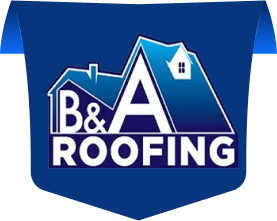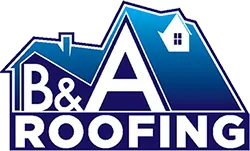Roof underlayment might not be the most visible part of your roofing system, but it serves as one of the most crucial protective barriers for Mississippi and Northern Alabama homes. This secondary layer, installed directly on the roof deck beneath your shingles, acts as a vital shield against leaks and other forms of weather damage.
Many homeowners wonder if they can skip underlayment to reduce roofing costs. While it’s technically possible, doing so exposes your home to significant risks, especially in Mississippi’s challenging climate. Without the proper underlayment, even minor shingle damage can lead to major leaks, structural deterioration, and decreased roof lifespan.
Understanding the types of underlayment available — from traditional felt to synthetic options and self-adhering ice and water shields — helps you make informed decisions about your roof’s protective system. The right choice in underlayment depends on the specific design of your roof, local weather patterns, and long-term protection goals.
The Essential Role of Roof Underlayment in Weather Protection
No matter where you live, roof underlayment serves as your home’s critical second line of defense against moisture, but especially when heavy rainstorms, tropical systems, and high humidity conditions are common.
During severe weather events, wind-driven rain can force moisture beneath shingles, making underlayment the difference between a minor exterior issue and major interior damage. This secondary barrier becomes particularly valuable during hurricane season when homes face extended periods of intense precipitation and powerful winds that can lift or damage shingles.
Roof underlayment also provides temporary protection during phases of installation. In our region’s rapidly changing weather conditions, construction projects often face unexpected storms. Quality underlayment shields your exposed roof deck during these vulnerable periods, allowing roofers to work with greater flexibility around weather forecasts without risking water damage to your home.
The high humidity levels characteristic of our Southern climate make underlayment particularly important for preventing moisture buildup in the attic. This additional protective layer helps maintain proper ventilation and prevents condensation issues that could lead to mold growth and reduced insulation effectiveness over time.
The Long-Term Benefits of Installing The Right Underlayment
Quality underlayment installation delivers substantial long-term advantages for Mississippi homeowners, extending well beyond immediate weather protection. A properly installed underlayment system significantly increases your roof’s lifespan by preventing moisture from entering the roof deck, even during Mississippi’s most challenging weather conditions.
In our region’s notoriously humid climate, underlayment acts as a critical moisture barrier that prevents deck rot and structural weakening. Without this protection, the high levels of humidity gradually deteriorate wooden roof components, leading to sagging, leaks, and eventually, premature roof replacement — an expense most homeowners prefer to avoid.
Beyond structural protection, quality underlayment contributes significantly to your home’s energy efficiency. During Mississippi’s summers, certain underlayment materials help reflect heat away from your attic space, reducing the strain on air conditioning systems and lowering monthly energy bills. Similarly, during occasional cold snaps, underlayment provides an additional insulating layer that helps maintain comfortable indoor temperatures.
Homeowners across Northern Alabama and Mississippi who invest in premium underlayment options often report more consistent indoor temperatures year-round. This stability not only enhances comfort but reduces the wear and tear on HVAC systems, extending their operational life and increasing your home’s overall efficiency.
Comparing Underlayment Materials for Southern Homes
Selecting the right underlayment material is crucial for homes in Mississippi and Northern Alabama, where high heat, humidity, and severe storms can test roofing systems to their limits. Synthetic underlayments have gained popularity in our region due to their superior water resistance and durability in extreme conditions. Unlike traditional felt options, synthetic materials won’t wrinkle or absorb moisture during our humid summers, providing more reliable protection against sudden afternoon thunderstorms.
Felt underlayment, while more budget-friendly, typically offers less protection against our region’s humidity. Standard #15 felt can begin to deteriorate after prolonged exposure to heat and moisture, while heavier #30 felt provides better durability but still falls short of synthetic options during hurricane season. For homes along the Gulf Coast or areas prone to tropical weather impacts, synthetic underlayment offers significantly better wind resistance and water protection.
Different types of roofs are common in Southern homes that require specialized underlayment solutions. Metal roof installation benefits from underlayments with higher temperature resistance to prevent heat transfer issues. For tile roofs, which are increasingly popular for their hurricane resistance, high-grip underlayments prevent tile slippage in high winds. Meanwhile, asphalt shingle installations perform best with underlayment featuring enhanced UV protection to combat the intense summer sun exposure that is received.
Professional Installation vs. DIY: Making the Right Choice
Installing roof underlayment in the Southeast requires specific expertise and regional knowledge that most homeowners simply don’t possess. Professional roofers serving Mississippi and Northern Alabama understand how local weather patterns affect underlayment performance and can select materials specifically designed to withstand our region’s high humidity, heavy rainfall, and occasional tropical systems.
DIY underlayment installation often leads to expensive mistakes. Common errors include improper overlap measurements, insufficient fastening patterns, and inadequate sealing around roof penetrations. During severe weather events, these seemingly minor mistakes can lead to significant water intrusion. What begins as a small leak during a thunderstorm can quickly escalate to major structural damage during hurricane season.
Professional installers also understand the critical importance of proper underlayment sequencing, particularly in vulnerable areas like valleys, eaves, and around chimneys. These high-risk zones require special attention and often additional waterproofing measures that DIY installers frequently overlook. Experienced roofers also know to check for proper integration between underlayment and flashing systems, creating a truly weathertight barrier.
Risks of Skipping Underlayment in High-Precipitation Regions
In Mississippi and Alabama, where annual rainfall often exceeds 50 to 60 inches, omitting roof underlayment creates substantial risks that can prove expensive for homeowners. Without this critical protective layer, the roof deck remains exposed to moisture infiltration whenever shingles are compromised by wind, debris, or normal aging. Even minor shingle damage can create entry points for water, leading to deck rot, mold growth, and structural deterioration that progresses much faster in our humid climate.
During hurricane season, homes without proper underlayment face a higher chance of damage. We’ve documented numerous cases where seemingly intact shingles were lifted or slightly displaced during storms, allowing significant water into homes lacking proper underlayment. In one recent example, after a Gulf Coast storm, homeowners with underlayment experienced minor leaks, while their neighbors without it suffered catastrophic ceiling collapse and extensive interior damage.
Most roofing manufacturers explicitly state that installing shingles directly on the roof deck without installing underlayment will void roofing material warranties. This leaves homeowners fully responsible for repair costs when problems inevitably develop. Additionally, insurance companies increasingly scrutinize claims from homes without standard protective measures, potentially denying coverage for damage that proper underlayment would have prevented.
Local building codes throughout Mississippi and Alabama now require underlayment specifically because our regional weather patterns make this layer essential, not optional. The minimal savings gained by skipping buying underlayment simply cannot justify the substantial risks and costs you’ll have to pay if you go without it.
Making an Informed Decision for Your Roof in Mississippi or Alabama
Choosing the right roof underlayment requires careful consideration of your home’s specific conditions. For Mississippi and Alabama homeowners, local microclimates should significantly influence your decision. Coastal areas near the Gulf face different challenges than inland regions, with salt exposure and stronger winds requiring more robust underlayment solutions. On the other hand, homes in heavily wooded areas need underlayment that can withstand potential debris damage during storms.
Roof pitch plays a crucial role in underlayment selection. Steeper roofs shed water more efficiently, potentially allowing for standard underlayment options, while low-slope roofs, common in modern homes, require self-adhering membranes that provide enhanced waterproofing against pooling water. Your chosen roofing material also impacts the type of underlayment you should use. For instance, metal benefits from noise-dampening underlayment, while architectural shingles perform best with synthetic options.
Finding a qualified local contractor who understands regional requirements is also essential for proper installation. Look for roofing professionals with specific experience in Mississippi and Alabama weather conditions who can demonstrate knowledge of how underlayment performs in our unique climate challenges. Ask potential contractors about their underlayment recommendations and why they believe certain products work best in your specific location.
Protect Your Home with Professional Underlayment Installation from B & A Roofing and Gutters
Ensuring your roof is equipped with the right underlayment is crucial for protecting your home from the unpredictable weather in Mississippi and Alabama. At B & A Roofing and Gutters, we specialize in providing top-quality underlayment installation that defends against moisture, enhances insulation, and extends the lifespan of your roof. Don’t underestimate the importance of a professionally installed roof underlayment.
Are you ready to secure your home against severe weather and improve your roof’s durability? Call us today at (601) 520-3183 to discuss your roofing needs with our expert team. Ensure your roof is strong enough to withstand the elements with B & A Roofing and Gutters. Your home deserves the best protection available.


